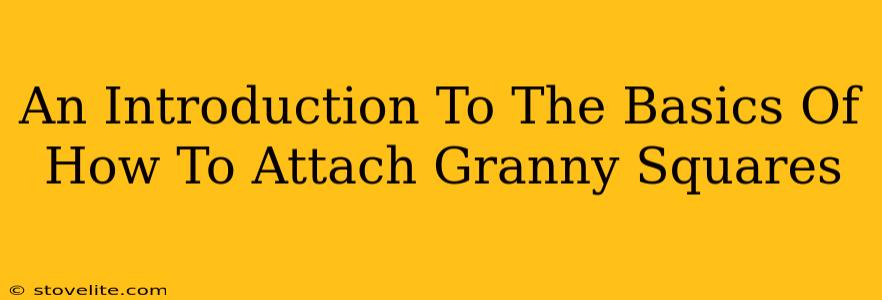Granny squares! Those colorful, versatile little squares are the cornerstone of so many beautiful blankets, throws, and even clothing. But the magic isn't just in making the squares—it's in knowing how to attach them to create a stunning finished project. This guide provides a beginner-friendly introduction to the basics of granny square joining techniques. Let's get started!
Why Joining Granny Squares Matters
Before we dive into the how, let's talk about why mastering granny square joining is crucial. Poorly joined squares can lead to a wobbly, uneven, and ultimately disappointing final product. A strong, neat join, however, elevates your project from a collection of pretty squares to a cohesive and professional-looking piece. It’s the finishing touch that truly makes your work shine!
Essential Tools and Materials
Before you begin attaching your granny squares, make sure you have these essentials:
- Your Finished Granny Squares: Obviously! Ensure they're all the same size (or planned for variations if you're making a specific design).
- A Crochet Hook: Choose a hook size appropriate for your yarn weight. The same hook you used to create the squares will usually work perfectly.
- Yarn Needle (or Tapestry Needle): This is essential for weaving in the ends and creating a clean finish.
- Scissors: For snipping your yarn.
- Your Chosen Yarn: You'll need extra yarn to join the squares; the same yarn you used for your squares is best for consistency.
Popular Granny Square Joining Techniques
There are several methods for joining granny squares, each with its own pros and cons. Here are some of the most popular:
1. The Slip Stitch Join:
This method is incredibly simple and creates a nearly invisible join, perfect for beginners. It involves slipping stitches together along the edges of adjacent squares. This technique is great for creating a seamless, almost invisible connection between your squares. It’s perfect for beginners!
Pros: Easy to learn, creates a neat and almost invisible join. Cons: Can be slightly slower than other methods, requires careful attention to detail.
2. The Single Crochet Join:
Similar to the slip stitch, the single crochet join involves working single crochet stitches along the edges of the squares to connect them. This method offers a slightly more visible join but remains quite strong and relatively neat.
Pros: Strong, relatively quick, and produces a neat finished look. Cons: The join is slightly more visible than the slip stitch method.
3. The Invisible Join:
As the name suggests, this technique creates an almost completely invisible join, resulting in a very professional-looking finish. It's a little more complex but well worth learning for ambitious projects.
Pros: Creates an incredibly clean, seamless look. Cons: Requires more practice and skill than the other methods.
4. The Simple Crochet Join:
This is a quick and easy method, ideal for projects where a slightly more visible join isn't a concern. It simply involves crocheting around the perimeter of all your joined squares to create a border.
Pros: Very fast and easy. Cons: The join is clearly visible.
Choosing the Right Joining Method
The best joining method depends on your project and your skill level. For beginners, the slip stitch join or the single crochet join are excellent starting points. More experienced crocheters might enjoy the challenge of the invisible join. If speed is your priority and you are fine with a more visible seam, the simple crochet join is the quickest option.
Tips for Success
- Practice makes perfect: Try joining a few sample squares before tackling your main project. This lets you experiment with different methods and perfect your technique.
- Even tension: Maintain consistent tension while joining to ensure an even and neat finish.
- Weave in your ends: Always weave in any loose ends securely to prevent them from unraveling.
- Blocking: Blocking your finished piece helps even out the seams and enhance the overall appearance.
By following these tips and practicing different techniques, you'll soon master the art of joining granny squares and create stunning, professional-looking projects! Now go forth and unleash your creativity!

